Hi everyone! Explore Diff Studio, Datagrok tool for solving differential equations.
Diff Studio takes a set of the differential equations in a declarative form, and creates a UI that solves the equations, visualizes the results, and lets you change parameters on the fly.
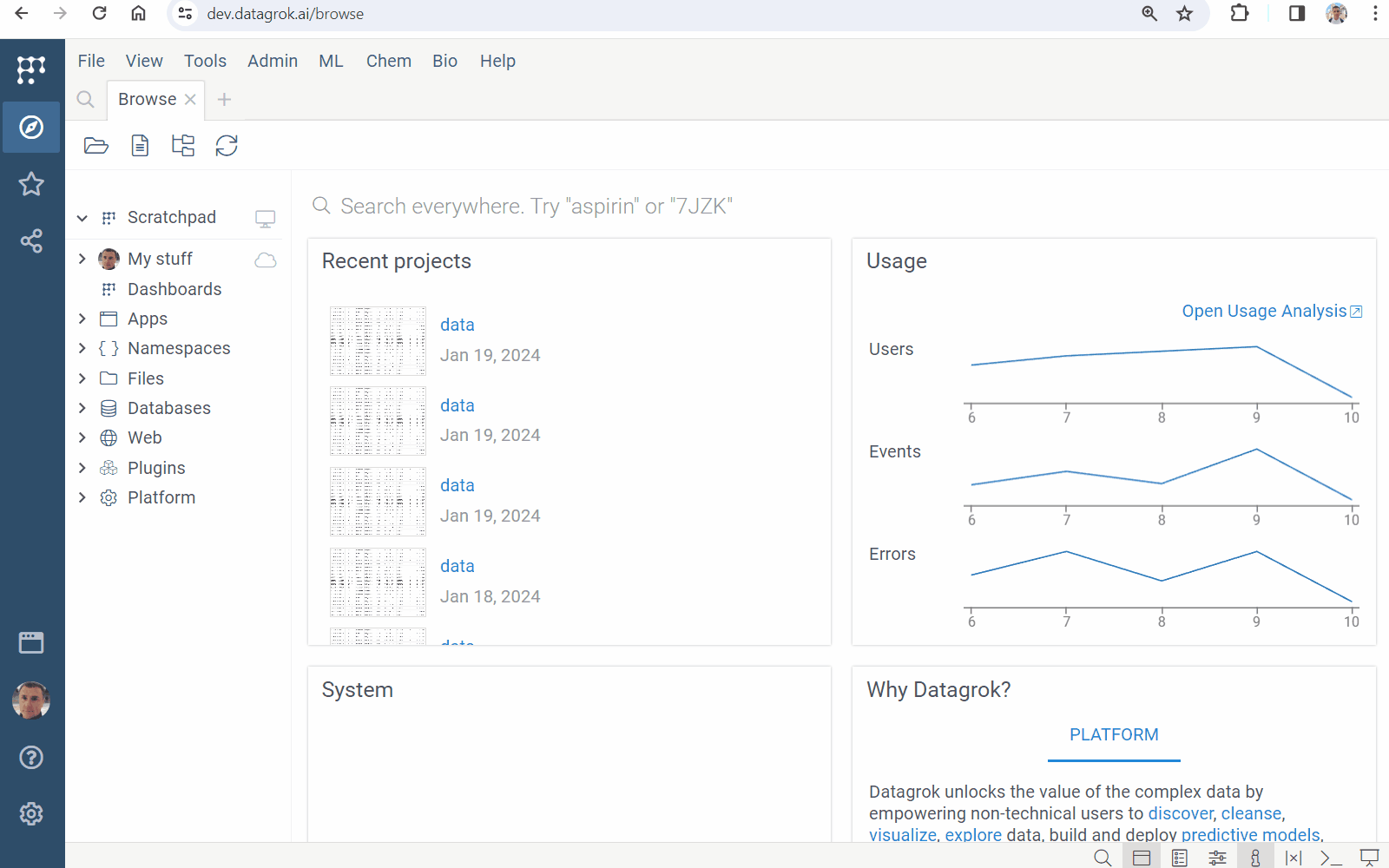
Diff Studio has built-in examples. They cover all Diff Studio capabilities. Use them them as a template.

In Diff Studio, you get interactive model exploration. Use annotating to customize interface.

Diff Studio has built-in sensitivity analysis feature. Run it to analyze the relationship between inputs and outputs of your model.
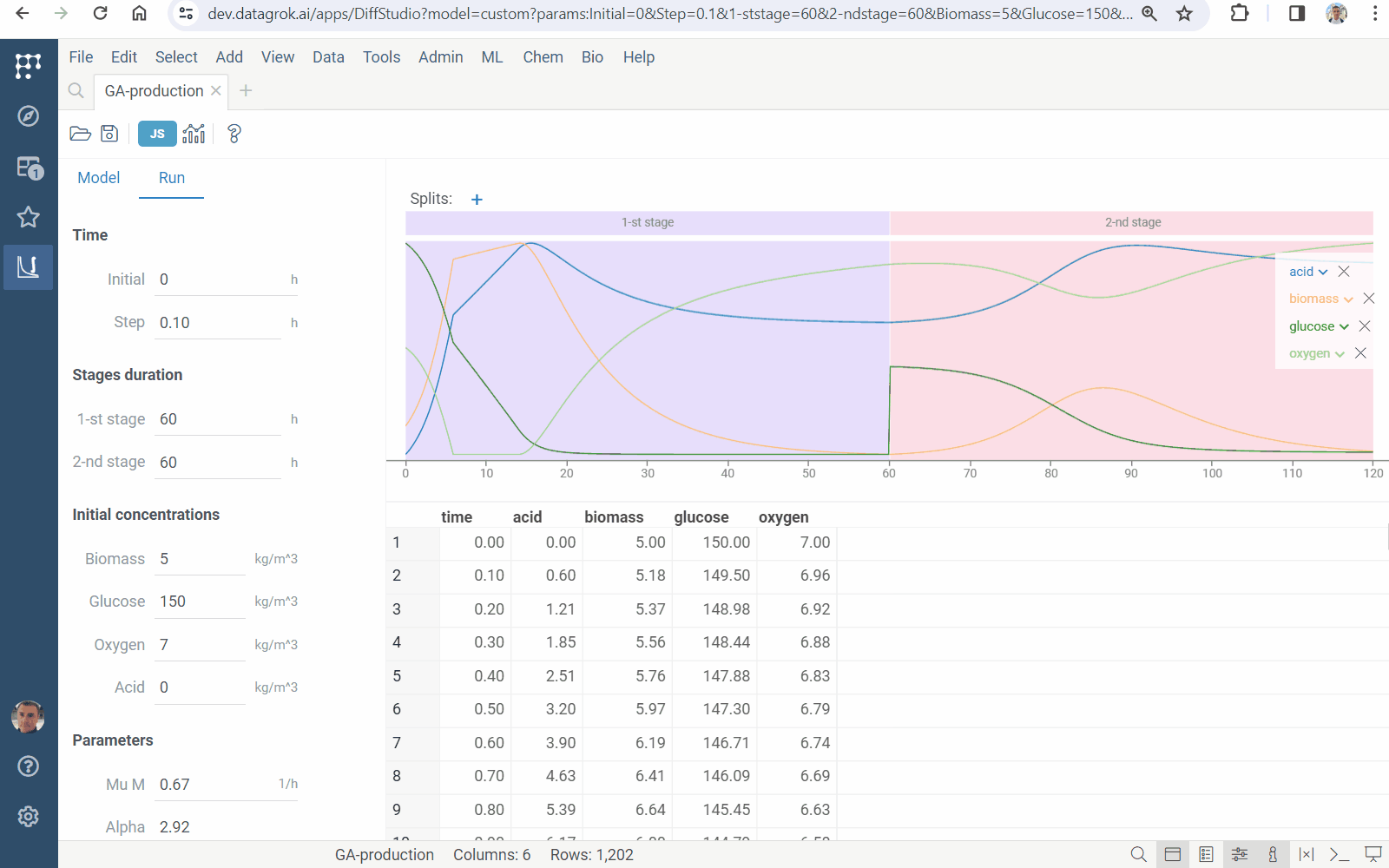
In Diff Studio, you can find input conditions leading to the specified output constraints for several clicks. Use the parameter optimization feature.
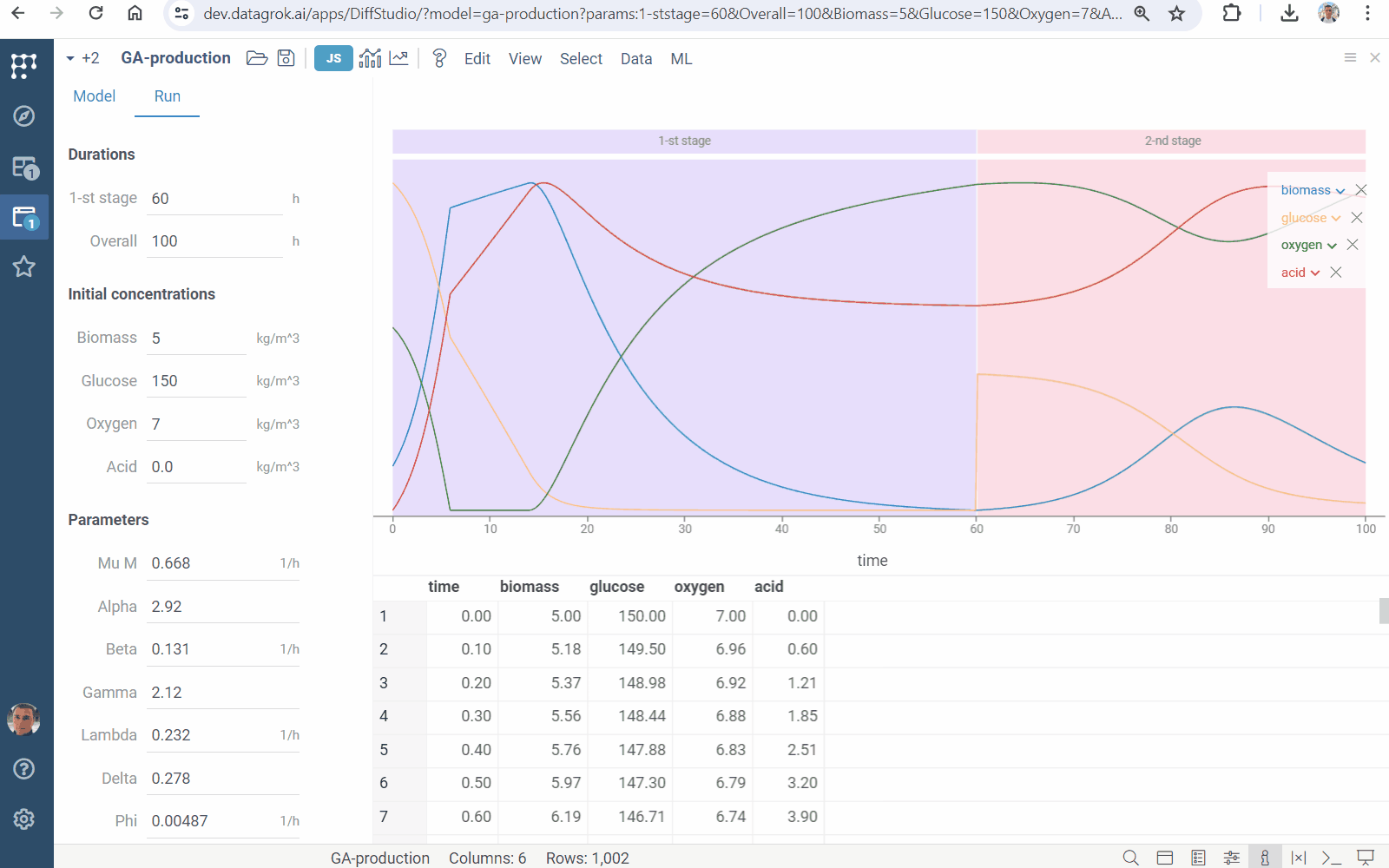
Diff Studio 1.1.1
Meet the new version of Diff Studio. This release provides:
-
64-bit floats usage
- higher precision
- removal of numerical artifacts
-
Integration to the browse tree
- check models from the
Templates&Examplesfolders - find recent models in the
Recentfolder
- check models from the
-
Templates & Examples update
- use the improved templates as a backbone of your project
- explore the
Pollutionmodel
Check it!
Browse
Go to Browse > Apps and expand the Diff Studio group:
-
Check model templates from
Templates. Start creating your project using them. -
Click
Examplesand explore built-in models. These recipes cover all Diff Studio capabilities. -
Find recently opened models in
Recent.
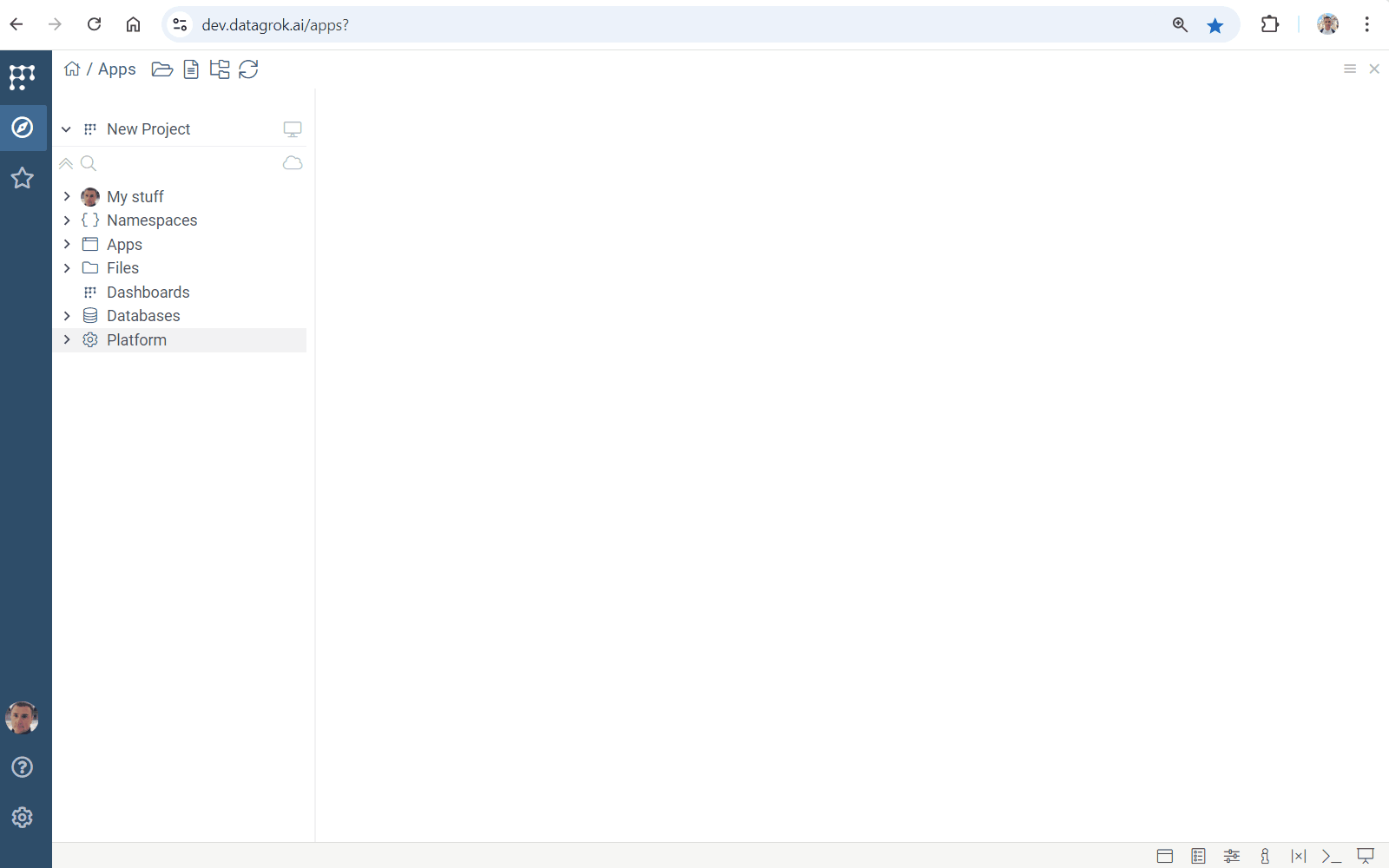
Share
Use URL to share models and their particular runs. Apply this feature to any item from Templates, Examples and Recent groups. Also, you can share models stored in ivp-files:
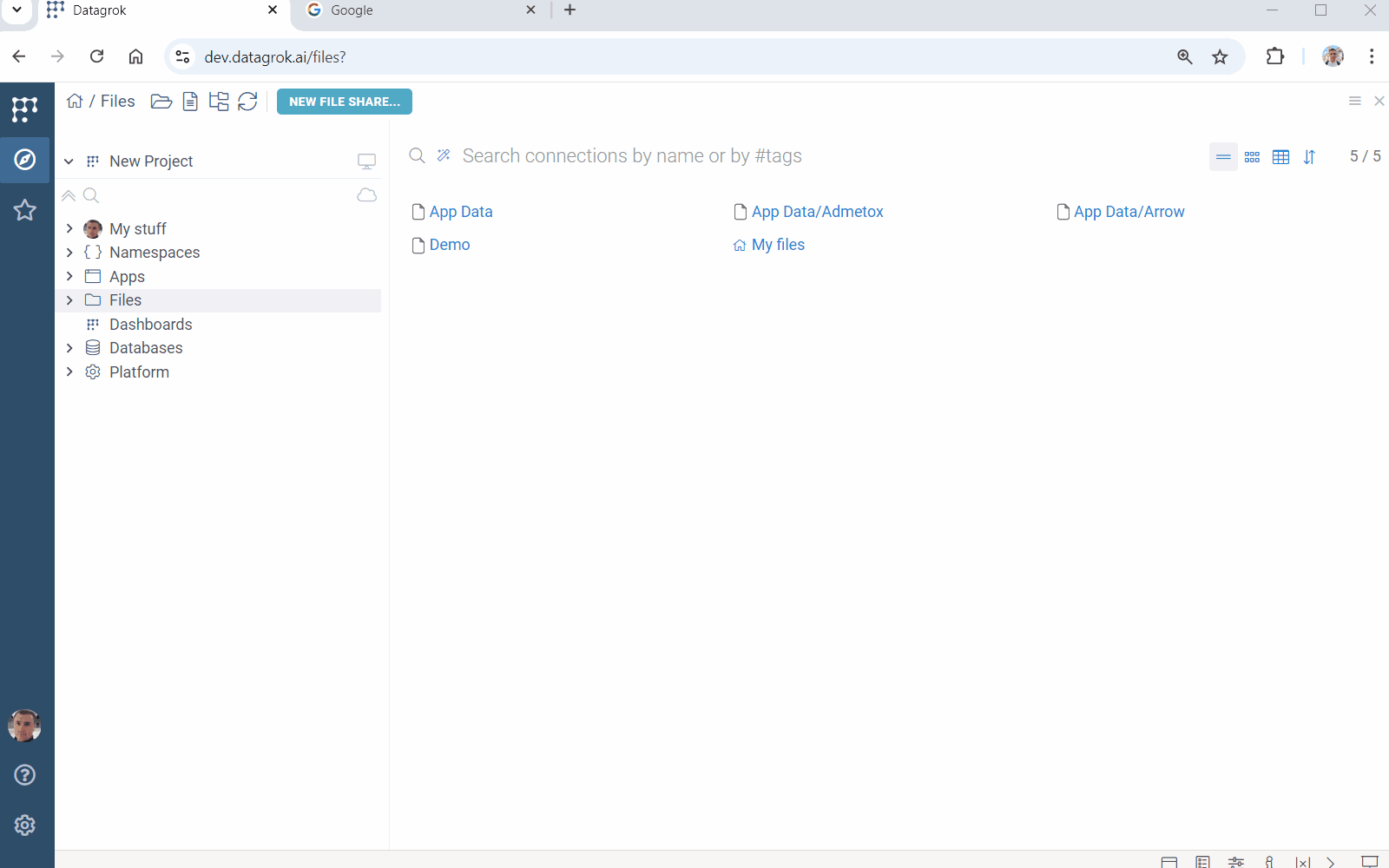
Performance
Diff Studio ensures solving both stiff and non-stiff equations.
Go to Browse > Apps > Diff Studio > Examples and select Pollution. This example describes a chemical reaction part of the air pollution model. This model consists of 25 reaction and 20 reacting compounds:
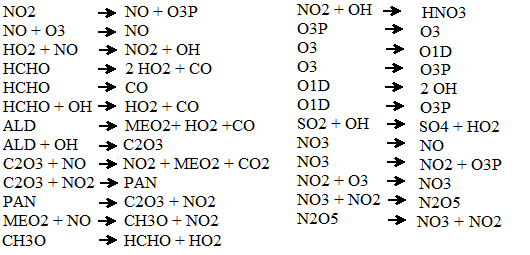
Move sliders and explore this model:

Benchmarks
Diff Studio implements the following Rosenbrock–Wanner methods: the modified Rosenbrock triple (MRT), ROS3PRw and ROS34PRw. They provide fast in-browser solving ODEs.
Check benchmarks:
| Problem | Segment | Points | Tolerance | MRT, ms | ROS3PRw, ms | ROS34PRw, ms |
|---|---|---|---|---|---|---|
| Rober | [0, 10E+11] | 40K | 1E-7 | 125 | 1066 | 507 |
| HIRES | [0, 321.8122] | 32K | 1E-10 | 626 | 931 | 489 |
| VDPOL | [0, 2000] | 20K | 1E-12 | 1124 | 2884 | 904 |
| OREGO | [0, 360] | 36K | 1E-8 | 947 | 1131 | 440 |
| E5 | [0, 10E+13] | 40K | 1E-6 | 24 | 52 | 18 |
| Pollution | [0, 60] | 30K | 1E-6 | 71 | 139 | 32 |
Here, the following classic problems are presented:
-
Rober
- a stiff system of 3 nonlinear ODEs
- describes the kinetics of an autocatalytic reaction given by Robertson
-
HIRES
- a stiff system of 8 non-linear equations
- explains the `High Irradiance Responses’ (HIRES) of photomorphogenesis on the basis of phytochrome, by means of a chemical reaction involving eight reactants
-
VDPOL
- a system of 2 ODEs proposed by B. van der Pol
- describes the behaviour of nonlinear vacuum tube circuits
-
OREGO
- a stiff system of 3 non-linear equations
- simulates Belousov-Zhabotinskii reaction
-
E5
- a stiff system of 4 non-linear ODEs
- represents a chemical pyrolysis model
-
Pollution
- a stiff system of 20 non-linear equations
- describes a chemical reaction part of the air pollution model designed at The Dutch National Institute of Public Health and Environmental Protection
Lookup tables
Apply lookup tables in your model. They let you initialize its inputs with a set of pre-defined values. To switch between input sets, it only takes a couple of clicks:
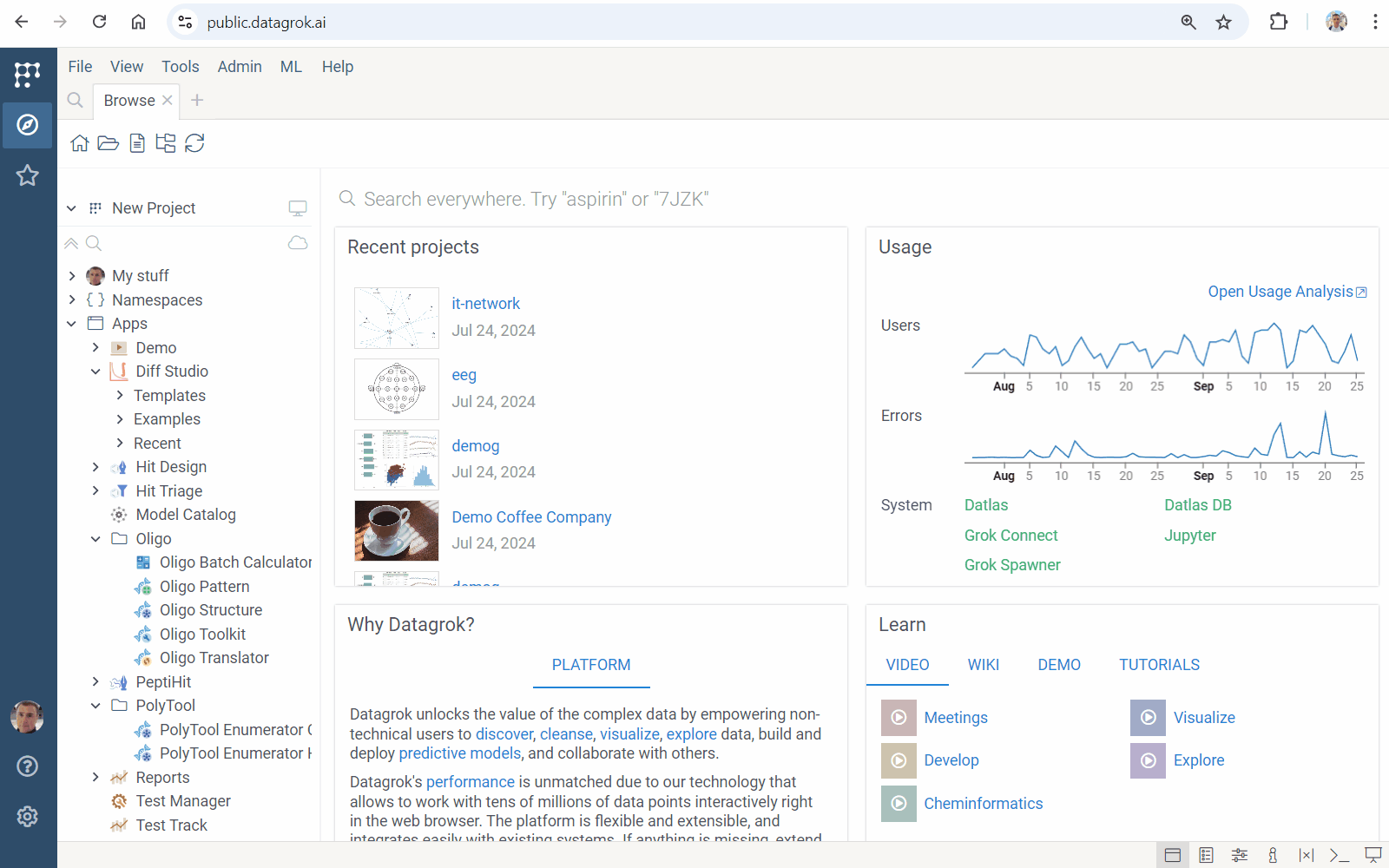
Run the Bioreactor example and check this feature.
The use of lookup tables reduces your job, when applying sensitivity analysis and parameter optimization. Switch between input sets in a few clicks:
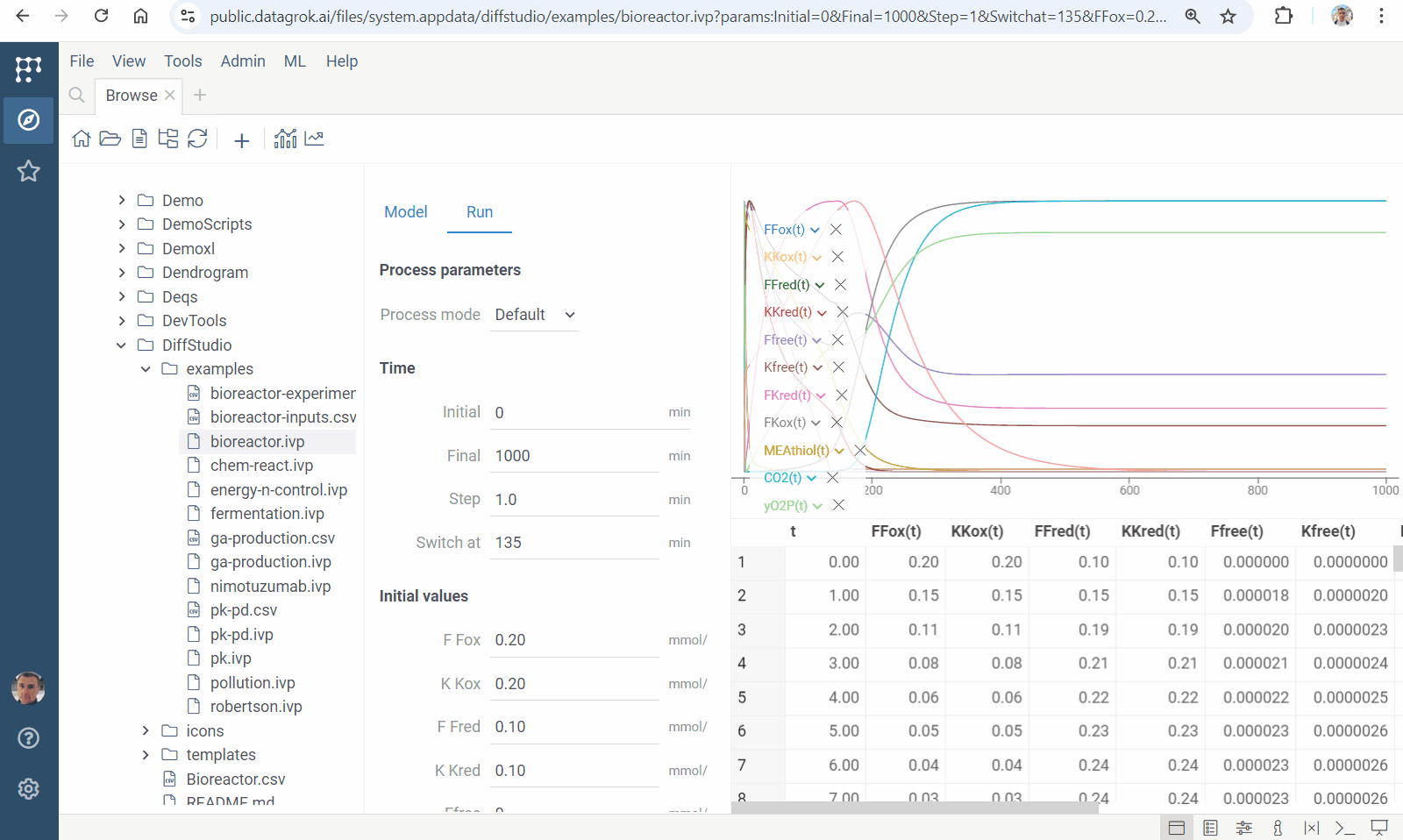
Run the Bioreactor example and check this feature.
Meet the new and improved Diff Studio interface:
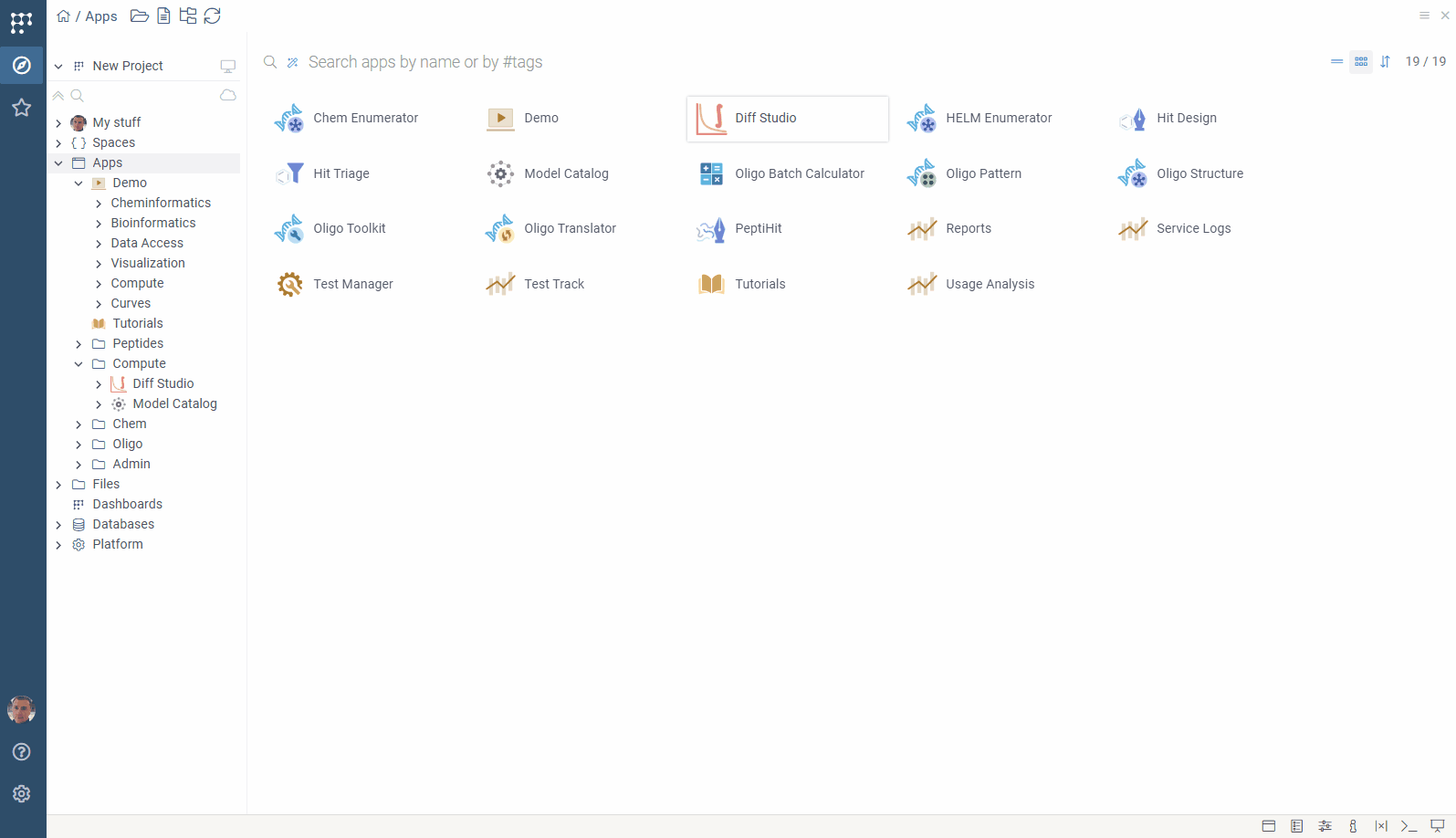
Check the simplicity and speed of creating models for complex processes and phenomena.
Explore built-in models. Find useful the syntax reference.
Check the Scientific Computing tutorials:
- Differential Equations: It will guide you through Diff Studio. You will develop the Lotka-Volterra predator-prey model and explore its features
- Sensitivity Analysis: You will learn how to explore the affect of input parameters on outputs of your model
- Parameters Optimization: You will learn how to find input conditions leading to the specified output of your model
We’re excited to introduce the facet grid feature, enabling you to visualize and compare solutions of systems of ordinary differential equations across multiple panels. Check the pollution model exploration:
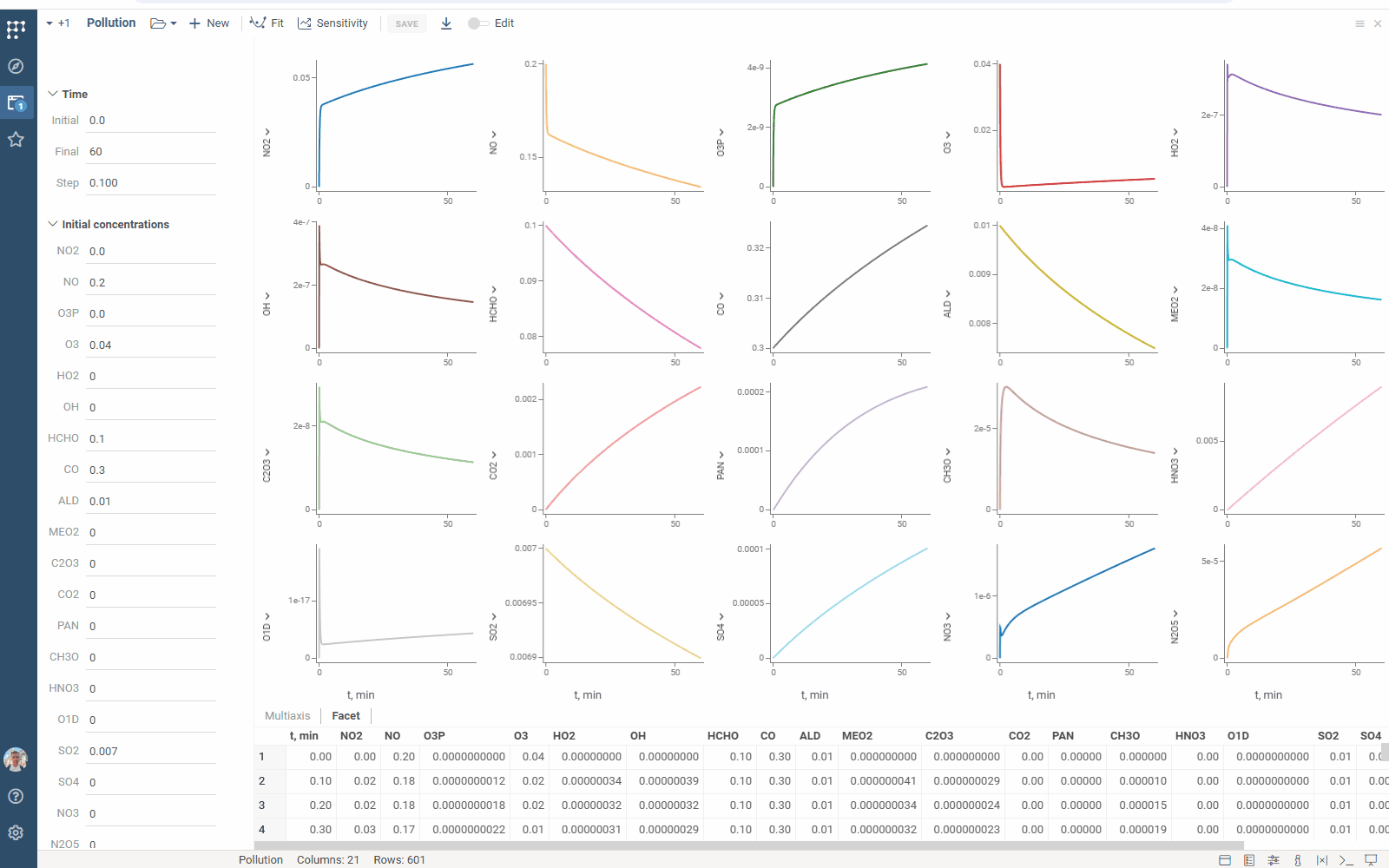
@vmakarichev - it look beautiful (played with it, and it feels really nice too) - great work! Hard to believe it all happens in the browser in real-time…
Great news for open source community!
Meet Diff Studio library for solving initial value problem (IVP) for ordinary differential equations (ODEs):
- Solving both stiff and non-stiff equations
- Fast computations (check performance)
- Scripting:
- declarative specification of models
- auto-generated JavaScript code
- Zero dependencies
Get involved: try it out and contribute back!
Check accelerated parameters optimization for Diff Studio models:
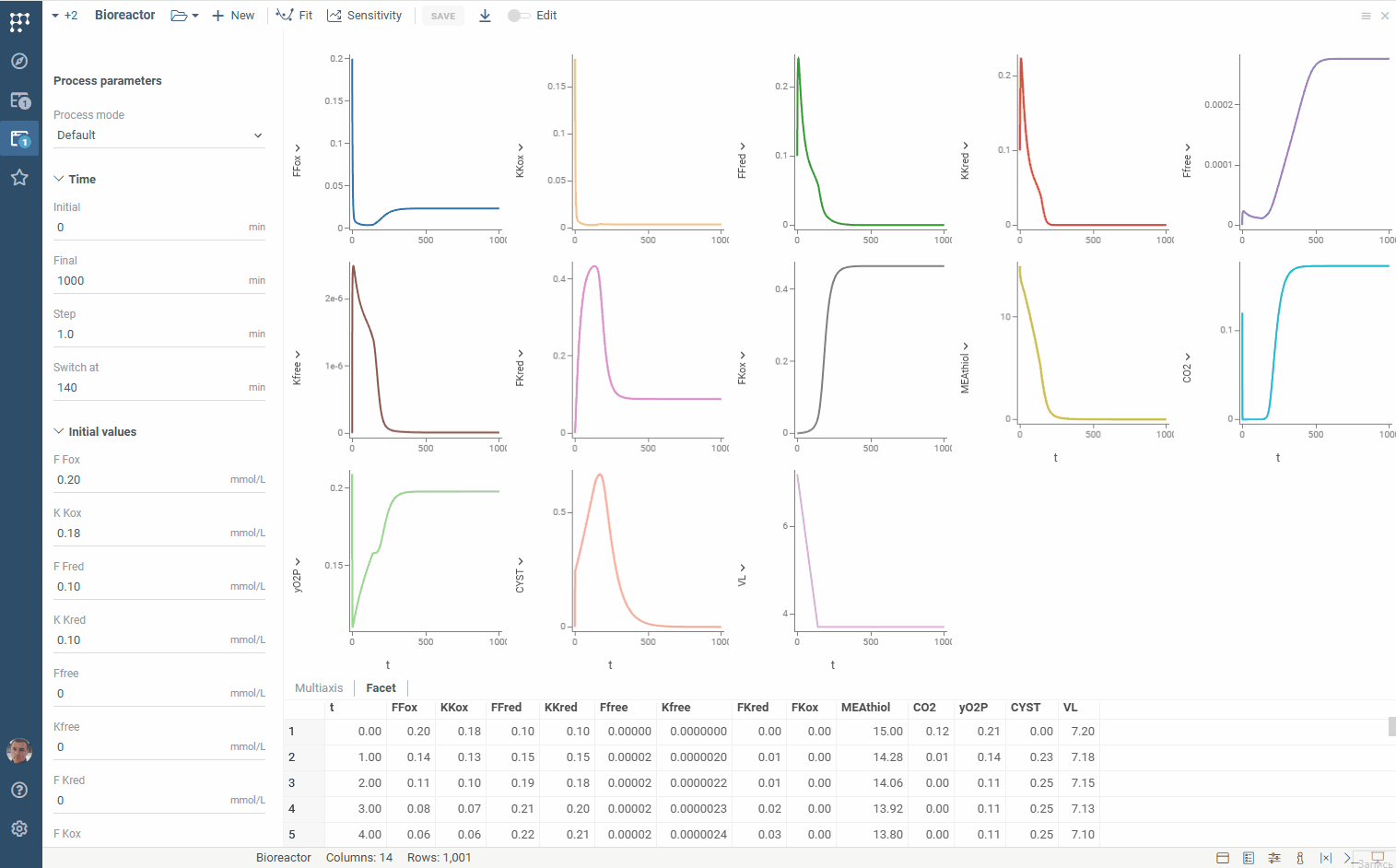
Due to Diff Grok features, a fitting runs in parallel now!